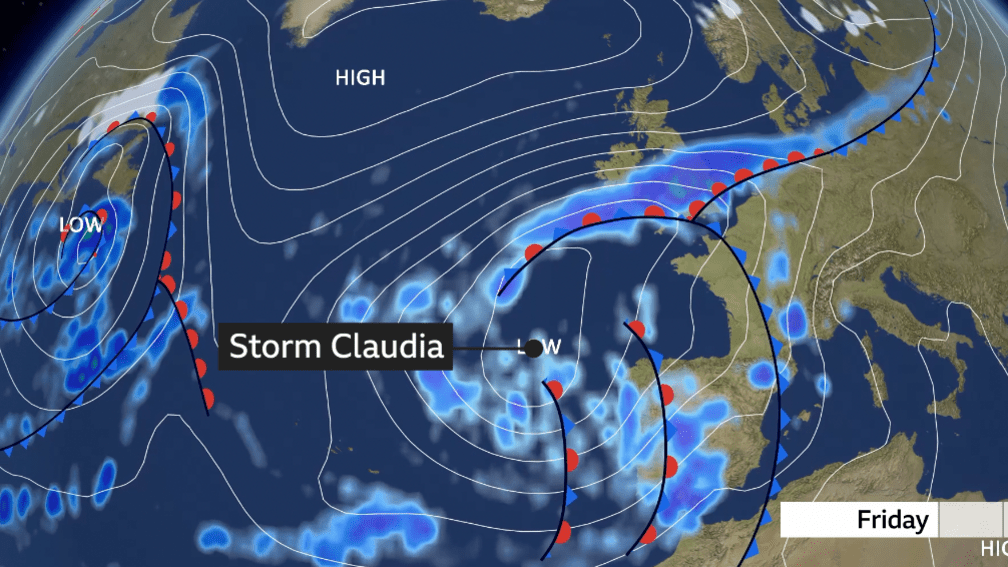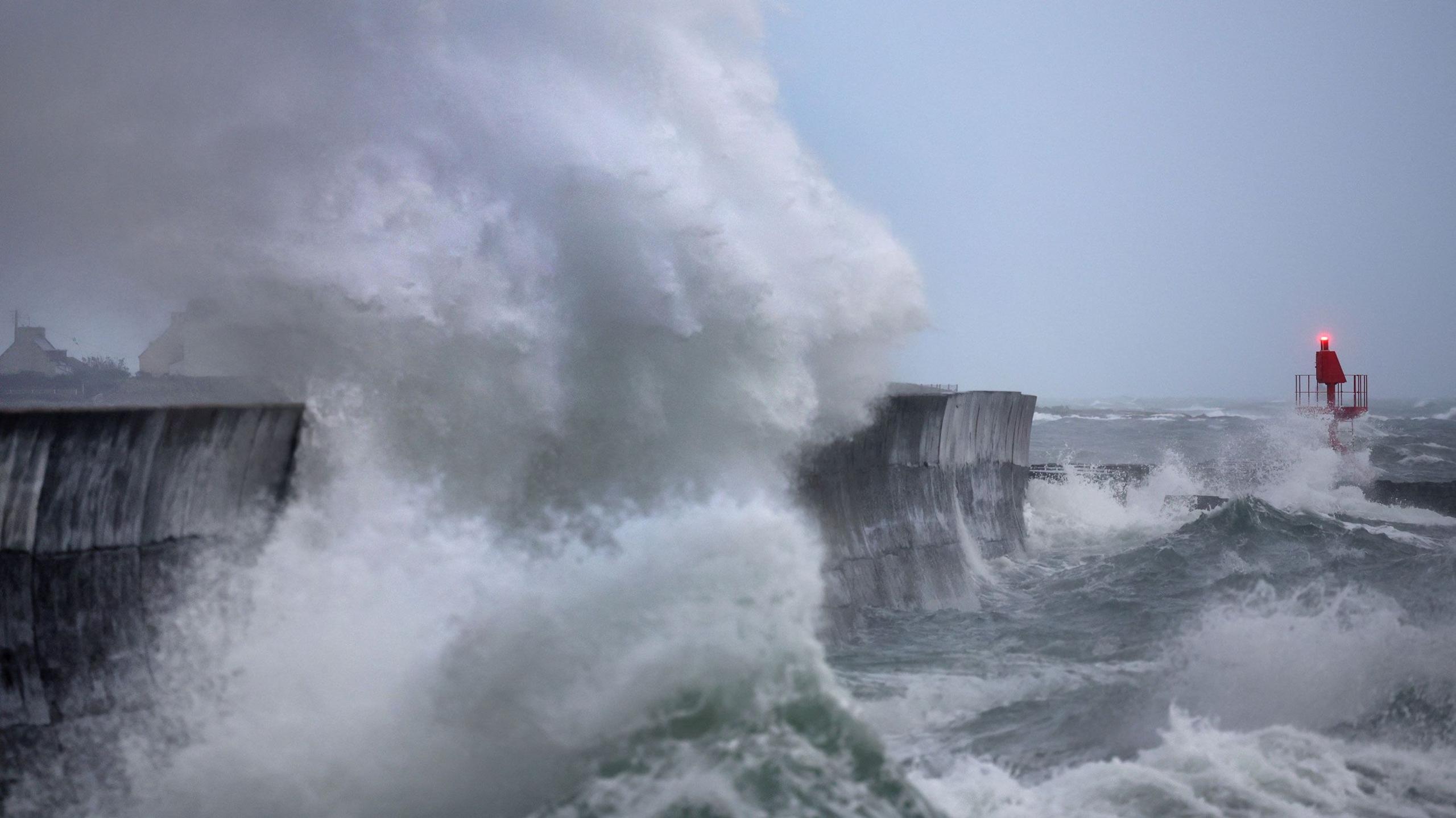Storm Claudia barrels toward the United Kingdom, poised to unleash torrential downpours and flood threats across England and Wales starting tomorrow. Communities brace themselves with amber warnings already active from the Met Office, signaling heavy rain, fierce winds, and travel nightmares on the horizon. This storm, freshly named by Spain's AEMET agency after ravaging southern Europe, follows a path of soaked fields and swollen rivers from Portugal and Spain straight to Britain's door.
November's soggy streak has left the ground primed for trouble, with rainfall totals already shattering norms in key spots. Shap and Carlisle in Cumbria have logged 226mm and 95mm so far this month, topping their typical 205mm and 85mm benchmarks. The Lake District's Honister Pass has absorbed more than 500mm, and south Wales' Bannau Brycheiniog grapples with over 200mm that fueled last week's heartbreaking floods. In Carmarthen, a shop owner shared the raw devastation, labeling it the worst flooding in living memory, a stark reminder of how these events rip at the fabric of daily life.

Storm Claudia’s trajectory across the UK, bringing heavy rain and strong winds from the south-west.
The Steep Financial Toll: Claudia's Shadow Over 2024's £1 Billion Storm Legacy
Storm Claudia's approach casts a long economic shadow, amplifying the scars from 2024's relentless weather onslaughts that racked up £650 million in insurance payouts alone. These storms didn't just flood homes, they eroded business revenues and inflated repair demands, contributing to a total economic drag nearing £1 billion when factoring in lost wages and infrastructure fixes. According to analysis reviewed by Finance Monthly, the ripple effects lingered, with supply chain snarls from flooded logistics hubs adding unexpected costs to everyday goods.
Louise Clark, policy adviser at the Association of British Insurers, voices the profound human cost woven into these figures. Families often face not just material loss, but the emotional weight of rebuilding from scratch, she explains, underscoring insurers' role as a lifeline amid rising pressures. "Home insurance plays a vital role in supporting customers when the worst happens," Clark reflects, her tone carrying the empathy of those witnessing communities' quiet battles. "Despite rising cost pressures, they remain committed to offering competitively priced cover and helping during claims." It's a poignant nod to resilience, turning cold numbers into stories of survival.
For ordinary households, the stakes hit close to home. Post-flood insurance hikes average 5-10%, spreading the burden and squeezing budgets already stretched thin. It sparks council tax bumps for recovery efforts and edges up grocery bills when farmland turns to lakes. A telling stat from the ABI: 2024 claims serviced over 100,000 properties, with mean settlements at £6,500 each, diverting funds from family priorities to hasty fortifications.
The actionable edge here lies in proactive fortification, a shift that's gaining traction with 2025's updated incentives. The government's Flood Resilience Grants, bolstered this year, now fund up to £5,000 for homeowner tweaks like permeable paving or raised utilities, proven to curb claim likelihood by 20-30% via Bank of England simulations. This isn't generic prep, it's targeted armor, check your postcode on the Environment Agency portal today for grant fits, then compare policies from at least three firms to snag flood riders before premiums surge. It's a smart hedge that preserves your financial footing when the skies open up.
Why Storm Claudia Packs Such a Punch This November
The storm's naming stems from Europe's coordinated system, designed to sharpen warnings and rally responses across borders. Unlike the sharp Atlantic fronts that usually batter the UK, Claudia slinks in from the southwest, lingering to saturate the landscape with its moisture-laden clouds. It will hover over central England through Friday, before retreating by early Saturday. South-easterly gusts could roar to 70mph across the Pennines and northwest Wales, scattering debris and testing power grids amid the deluge.
Yellow warnings stretch over much of England and Wales from 6:00am Friday to 6:00am Saturday, promising 30-50mm more rain that could slick surfaces and overwhelm urban drains. Though milder than the amber zones, it layers fresh peril on waterlogged earth, complicating commutes and outdoor plans alike.

Storm Claudia’s impact map shows areas at highest risk of flooding and severe rainfall across England and Wales.
Amber Alerts Target East Wales, Midlands, and Eastern England Tomorrow
Amber warnings activate from noon to 11:59pm GMT on Friday for east Wales, the Midlands, and eastern England. Elevated terrains face up to 150mm of rain in a day, nearly six inches that could cascade into valleys below. Wider zones anticipate 50-75mm, with some areas pushing 80mm, all heightening chances of river breaches, flash floods, and stranded vehicles.
The Met Office forecasts a cascade of disruptions, from shuttered roads to snarled rail lines and bus reroutes. Low-lying neighborhoods downstream from rising waters receive the most pressing evac prep notices, building on the scars from recent south Wales inundations.
Safety Steps to Weather Claudia's Onslaught
Officials deliver straightforward guidance for amber and yellow zones alike. Folks should plan to stay put through Friday's peak, resisting the pull of routine errands. Wading through floodwaters invites unseen dangers, so heed barriers and seek alternates. Reach out to at-risk loved ones, assemble go-bags with meds and documents, and rehearse escape paths to high ground.
Councils deploy live flood cams and level monitors, essential for on-the-fly choices as conditions shift. With wind-whipped outages possible, preload phones and keep non-perishables stocked. This mix of vigilance and solidarity transforms looming threats into manageable hurdles.
Tracking Claudia: Essential Updates for Friday's Fury
The storm advances northward tomorrow, stalling mid-country before dissipating Saturday morning. The Met Office site beams radar feeds and push alerts, while BBC Weather unpacks hour-by-hour forecasts. Regional sources like BBC Wales and Sky News ground the story with frontline dispatches, from barrier builds to aid distributions. Staying informed keeps you one step ahead in the squall.















